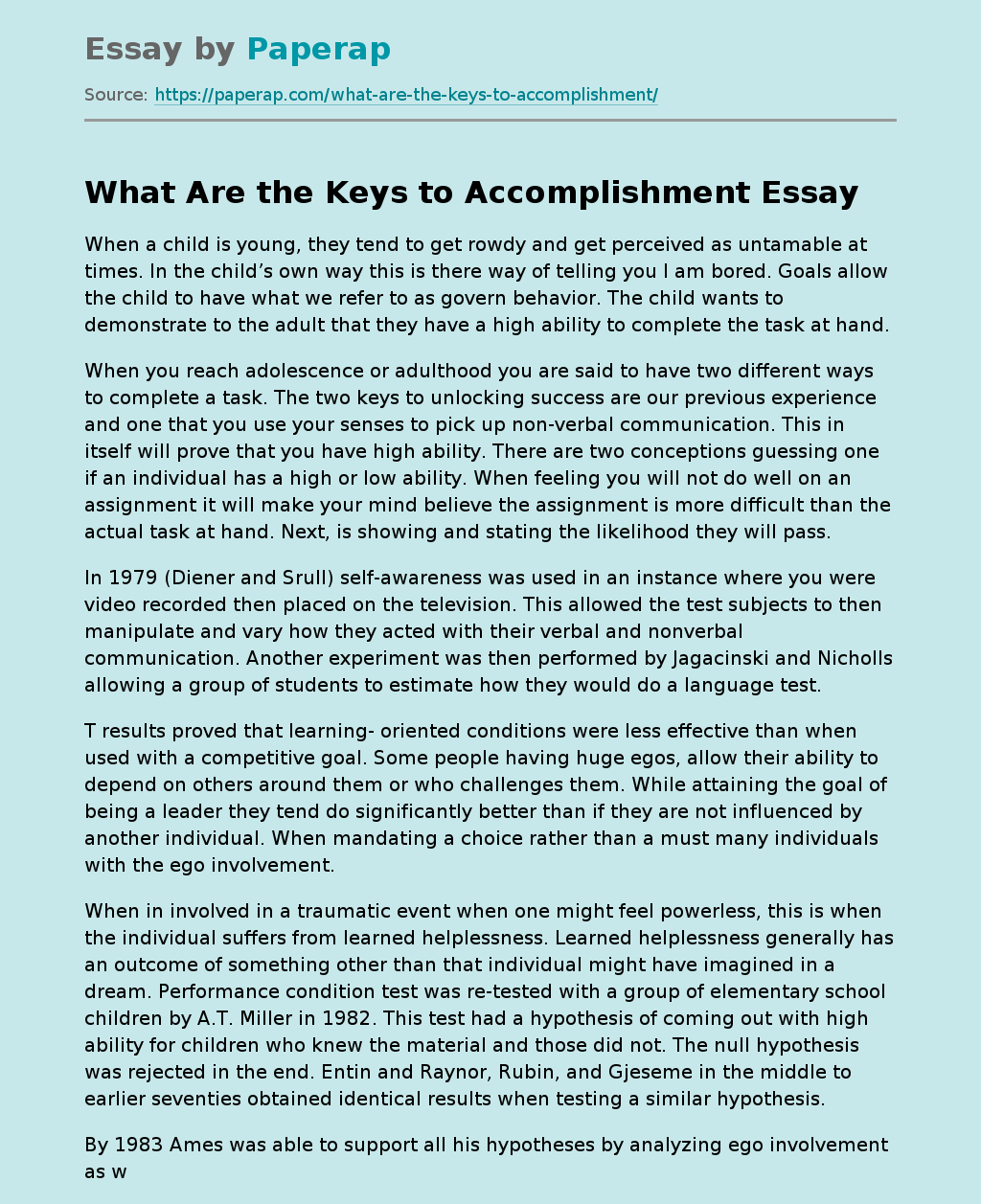What Are the Keys to Accomplishment
When a child is young, they tend to get rowdy and get perceived as untamable at times. In the child’s own way this is there way of telling you I am bored. Goals allow the child to have what we refer to as govern behavior. The child wants to demonstrate to the adult that they have a high ability to complete the task at hand.
When you reach adolescence or adulthood you are said to have two different ways to complete a task.
The two keys to unlocking success are our previous experience and one that you use your senses to pick up non-verbal communication. This in itself will prove that you have high ability. There are two conceptions guessing one if an individual has a high or low ability. When feeling you will not do well on an assignment it will make your mind believe the assignment is more difficult than the actual task at hand. Next, is showing and stating the likelihood they will pass.
In 1979 (Diener and Srull) self-awareness was used in an instance where you were video recorded then placed on the television. This allowed the test subjects to then manipulate and vary how they acted with their verbal and nonverbal communication. Another experiment was then performed by Jagacinski and Nicholls allowing a group of students to estimate how they would do a language test.
T results proved that learning- oriented conditions were less effective than when used with a competitive goal. Some people having huge egos, allow their ability to depend on others around them or who challenges them.
While attaining the goal of being a leader they tend do significantly better than if they are not influenced by another individual. When mandating a choice rather than a must many individuals with the ego involvement.
When in involved in a traumatic event when one might feel powerless, this is when the individual suffers from learned helplessness. Learned helplessness generally has an outcome of something other than that individual might have imagined in a dream. Performance condition test was re-tested with a group of elementary school children by A.T. Miller in 1982. This test had a hypothesis of coming out with high ability for children who knew the material and those did not. The null hypothesis was rejected in the end. Entin and Raynor, Rubin, and Gjeseme in the middle to earlier seventies obtained identical results when testing a similar hypothesis.
By 1983 Ames was able to support all his hypotheses by analyzing ego involvement as well as task involving conditions. Secondly, experimenters have been led to think ability and achievement are fixed when it comes to how much you want to do such as with ego involvement. Jagacinski and Nicholls concluded guilt is linked to effort. This allowed for a new light when it comes it comes to achievement affect. Lastly, conception of ability this is the example that was previously stated with the child being goal oriented in order to achieve their goals. This has been deemed successful as well as necessary when it comes to raising children especially those with special needs.
What Are the Keys to Accomplishment. (2021, Dec 13). Retrieved from https://paperap.com/what-are-the-keys-to-accomplishment/

